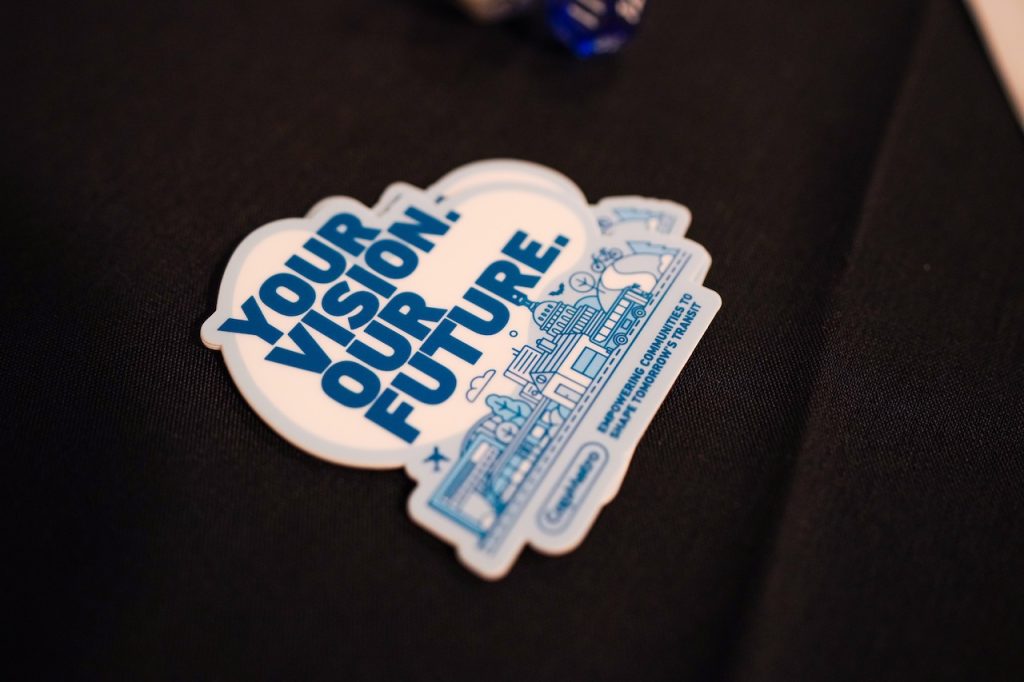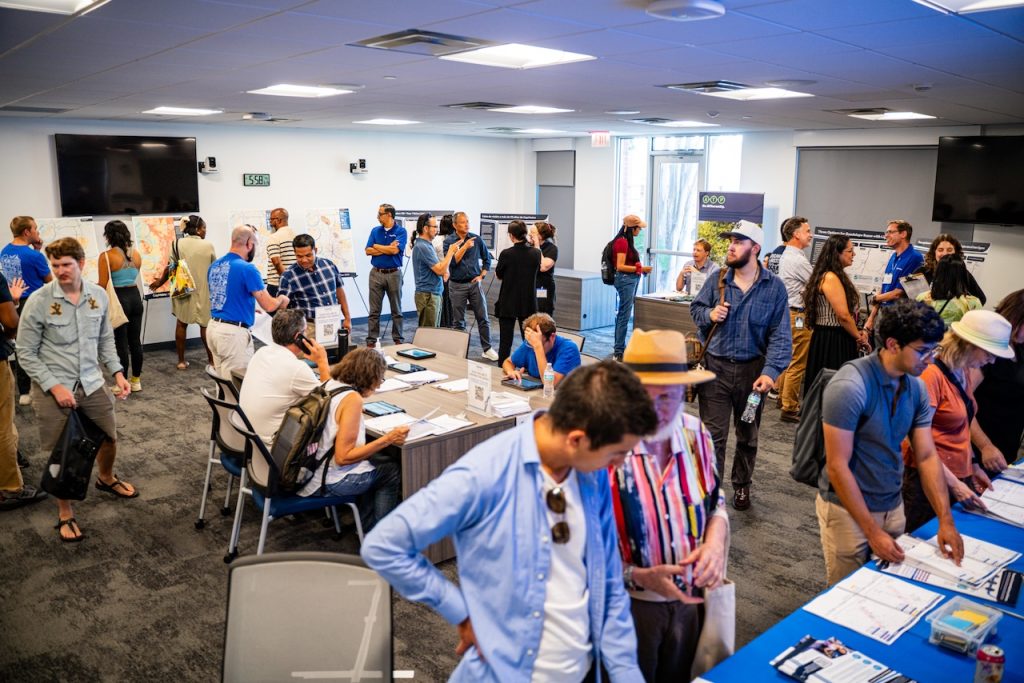When the CapMetro Board of Directors voted to approve Transit Plan 2035 on October 20, 2025, it marked the culmination of 18 months of listening, learning and planning for the future of public transportation in Central Texas. This plan will offer us a path forward into the future, to build a more reliable and connected transit system over the next decade.

This plan wasn’t created in a vacuum — it’s a shared vision that reflects what our riders and our region told us they need. Transit Plan 2035 provides us with a goal and objectives to improve a transit system that grows with the Central Texas region, is well-prepared for more high-capacity transit and continues to connect people to opportunity.
Built with Central Texas
CapMetro’s Planning team met people where they are traveling most–at bus stops, campuses, community events—as well as online. This plan is built on the voices of over 10,000 community members, all of whom shared their thoughts about where and how transit should improve. That input wasn’t just collected; it reshaped the plan.
“We wanted to make sure with Transit Plan 2035 that we involved the community every step of the way,” said Kelsey Lammy, Community Engagement & Involvement Manager at CapMetro. “Based on the feedback we got from the last round of engagement, we changed about 40% of our routes, [and] made some minor tweaks based on community input. We heard them, we listened and we want to make sure we got it right.”

Through two major rounds of engagement and more than 30 focus groups, CapMetro revised 26 routes and redefined service priorities to make the system work better for riders.
“It’s really important to have an idea of how the community has changed. Look at how things are going to be developing into the future and understand where people are trying to go,” said Rose Lisska, Principal Planner at CapMetro. “We want to make sure we shift our services to match those travel patterns.”
What the Plan Delivers
The result of analyzing all this input is a vision for the next 5 to 10 years—and even some plans for beyond that—with recommendations to improve Bus, Rail and Pickup service.
The approved plan outlines how CapMetro will evolve over the next decade, in three distinct phases.
Near-Term (0–5 Years):
- Update 61 routes and expand 12 Pickup zones.
- Improve service on two Rapid lines and integrate one more route into the High-Frequency Network.
- Open North Burnet/Uptown Station, extend Rail hours and continue double-tracking for reliability.
Some of the routes that will see frequency upgrades are:
- Bus route 350/Airport Blvd.
- Rapid route 800/Pleasant Valley
- Rapid route 837/Expo Center
“These routes are vital connections for thousands of riders every day,” said Lammy. “We’re excited that we’ll be improving the frequency on these routes. This will make a big difference for our customers who depend on these routes.”
Mid-Term (5–10 Years):
- Coordinate new service with Austin Light Rail and Project Connect investments.
- Add seven routes modified for light rail integration and five new Rapid lines, ensuring smooth transfers and travel times whether you are on the bus or the rail.
- Increase frequency on key corridors and expand regional Pickup coverage.
Long-Term (10+ Years):
- Lay the groundwork for a regional express and rapid transit network, connecting communities across Central Texas through new partnerships and investments.
A Regional and Equitable Focus
Transit Plan 2035 is about connecting more people to opportunity. The plan increases access to jobs, education and healthcare across Austin and surrounding cities. The changes we recommend will align our service to reflect travel patterns in the region, with ongoing community involvement every step of the way.
Key regional improvements include:
- Northeast: A new Expo Center Park & Ride, stronger Airport Blvd. corridor and sustained service for Johnny Morris Rd.
- Northwest: A reallocation of resources to better connect people to the Domain.
- Southeast: More direct service to Austin-Bergstrom International Airport, improved access to the VA Hospital and future service on Vargas Road.
- Southwest: A new Rapid line between Oak Hill and South Austin and improved crosstown links to Barton Creek Mall.
- Central Austin: A bi-directional circulator in East Austin, better access to Mueller and simplified downtown routing.
- UT Area: Two new mainline routes replacing shuttle service, approved unanimously by the UT Shuttle Committee.
Why It Matters
This plan prepares Central Texas for population growth and for other changes that are inevitable in our dynamic region. It builds a network that can handle new technologies, regional expansion and more diverse travel needs. Transit Plan 2035 will:
- Expand access to underserved neighborhoods.
- Better connect riders to jobs and education with realignments of existing service.
- Reduce wait times and improve reliability through higher-frequency service.
- Provide students with more consistent service by consolidating routes.
- Enhance sustainability, integrating clean energy vehicles and multimodal connections.
- Support Project Connect, aligning today’s network with tomorrow’s light rail system.
The Road Ahead
Implementation begins in 2026, with updates rolling out in phases. Each phase will be implemented incrementally through CapMetro’s standard service change process, which includes additional community engagement and Board approval. CapMetro will continue to invite community feedback as it designs, tests and refines each stage.
“I just want to thank the community for all their involvement,” said Lisska. It’s been amazing to listen to everyone and hear what they need, and deliver that for them.”

Transit Plan 2035 is a living document, built by the community, for the community. It represents how Central Texans move, where they work, and what kind of future they want to build. Once fully implemented, this new plan will position CapMetro to be a leader in shaping Central Texas mobility for the next decade and beyond.
Together, we’re building a smarter, more connected Central Texas.
To stay informed, residents can explore maps, route comparisons, and FAQs at capmetro.org/transit-plan-2035.


